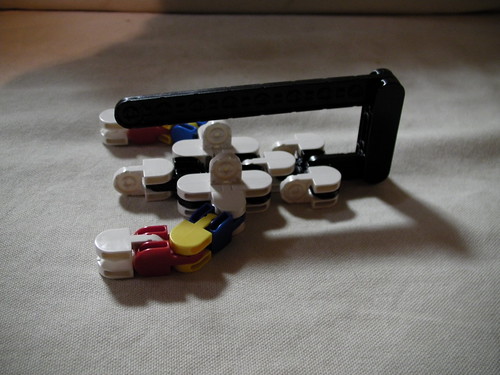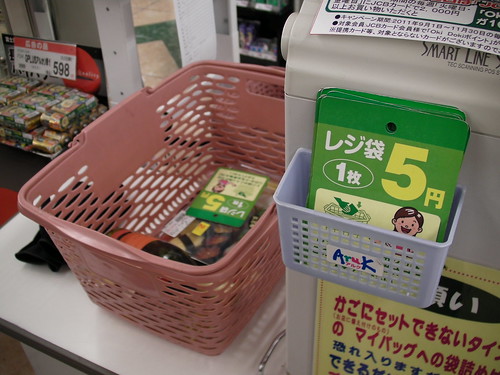Friday, December 30, 2011
Derrida,Différance,Oedipus, Ajase and Japanese Re-collection
All sorts of people from Plato to Mead and beyond, have pointed out that self-speech is important to the Western self. Then Derrida came along and derided (his pun) our experience of "hearing ourselves speak." Why do we do it? What could we ever tell ourselves that we do not already know? One needs a difference for communication to take place, so how can self-speach make any sense?
Derrida noted that self-speech makes sense in the form of a memo. "Buy eggs." We can write memos, and postcards, to ourselves in the future. And that is he said what we are always doing, as we listen to ourselves speak, we are differing, putting something off, waiting for something. To coin Roy orbison, in différance I talk to me.
Crossing Derrida with Lacan and the Oedipus complex, the birth of the self in the Oedipus complex takes place as a promise, or defferal. We realise that we will not get mother, that she sleeps elsewhere, but we enter the Oedipus waiting room because we are promised love in the future.
From the Japanese point of view the Western family is a bit like fagging. Adult men brutalise their children, making them sleep alone, but the children stop crying, and learn to love big daddy and the system, because they are promised that they can do the same in future.
The Japanese are doing something similar in reverse. They sleep with the children in between mother and father. Japanese men sleep in this way because that is how they grew up. There is a great nostalgia, a collective recollection going on in Japan. They are promised nothing but recollect everything.
And, as mentioned in recent posts on combining toys, the Japanese re-collect themselves. They create themselves out of the scrap book of images, in mirrors, in photos, in other people's eyes. And when they do so, just as we can only speak to ourselves in différance, a self-image brought to mind is always a re-collection of oneself in the past.
And hence all the nostalgia in Japan, as treated in other posts (Retro Confectionery, Nostalgia).
Left, the cover of Keikgo Okonogi's "Edipusu to Ajase" (Oedipus and Ajase)
Top right Derrida by speedypete312
Labels: culture, image, japan, japanese culture, Jaques Lacan, lacan, nihobunka, nihonbunka, self, specular, 日本文化
Thursday, December 29, 2011
Japanese in the mirror of language: Flaming and the 2ch Cat
Nowhere do posters go as wild as on "2 channel," the massive Japanese anonymous online forum. The mascot of the forum is the cat (shown above) called "Mona," or fully "Omae Mona" which, as well as being a proper noun, means "same to you too." But posters do not stop at that. Normally polite Japanese become frank. They occasionally engage in extremely hostile interaction called "flaming," even telling each other to "die" (the nastiest thing you can say in Japanese).
Flaming occurs all over the world but nowhere with such abandon as in the anonymous forums serving the Japanese. The "festivities" sometimes reach a such a peak that numerous contributors will act in unison to do something like...vote a child pornographer one of Time magazine's most influence people of the decade. But users of 2ch by no means necessarily act in unison. At times everyone will be disagreeing with everyone else, sometimes, as noted above, to the point of gross insult.
So why is it that hostile interaction occurs with such vigor in Japan? Is it because the Japanese are usually so repressed that given the chance to lash out, they do so with all the more force?
Research on self disclosure (Matheson & Zanna,1988 see Sugimoto,2009) in online communication has suggested that the reason for greater self-disclosure on internet forums is due to a decrease in public self awareness (less awareness of the censure of others) and a greater private self awareness. Joinson (2001, again in Sugimoto, 2009) found that only when private self-awareness was high did anonymity, lack of public self-awareness, lack of censure result in increased self disclosure. In other words it is not enough to be be free to insult people. People have to be encouraged to feel their own attitudes and emotions more strongly for them to want to lash out.
So returning to the question, why do the Japanese especially go wild on internet forums? As per the previous research I think that it is because not only does the anonymity free them from the eyes of others, but also because the experience of typing on an Internet forum is especially likely to encourage them to have increased private self awareness, of their attitudes, values and feelings on a particular topic.
In Joinson's research above, private self awareness of the American subjects had to be manipulated visually. Those in a high private self awareness condition were presented with a picture of themselves. Since of course the Japanese are not sitting infront of pictures of themselves at their computers (and my research has shown that they are always in front of a mirror, because they have simulated a mirror in their heads), it must be the experience of typing their thoughts that increases their private self-awareness. Posting to 2ch is like standing in front of a linguistic mirror, a big sound box where ones thoughts echo around and bounce back to you. It is in this situation, combined with the anonymity, that the Japanese really go dylan, off the wall, and radical because usually they do not have a linguistic mirror in their head (unlike the Other found in most anglophones).
Incidentellly, the method used to decrease private self-awareness was to display a cartoon character on the screen. Perhaps this is why Japanese people are so fond of carrying chartoon characters around with themselves -- to decrease their private self awareness. I think that the "same to you too" cat of 2ch may have a calming (private-self-awareness decreasing) influence upon its viewers. Let us look upon Mona and feel calm:-)
The above thanks to Goto Hayabusa's graduation thesis (2011) and the research of Sugitani (2009) as referenced below in Japanese.
杉谷陽子(2009)「インターネットにおける自己呈示、自己開示(第3章)」三浦麻子・森尾博昭・川浦康至編「インターネット心理学フロンティア」誠信書房, Pp.59-85.
Labels: collectivism, individualism, japanese culture, Jaques Lacan, lacan, logos, mirror, nihobunka, nihonbunka, occularcentrism, theory, 個人主義, 集団主義
Wednesday, December 28, 2011
Mophing Transforming Lego Scorpion and the Japanese Self
Jurat by Toyda is a kind of Lego for morphing robot makers.
I am not sure why Japanese children especially, and anyone who likes the movie series Transformers, are keen on transforming or morphing.
There is often a morph between something inanimate and something animate, between a something used, a tool or vechicle and a using thing living robot.
The above is a scorpion which morphs from/into a sword made by my son from Jurat morphin lego by Toyda.
I would like to suggest that Japanese children (and anyone fond of Transformers, which is most children everyhwere) but especially Japanese children because they remain in a "mirror stage," may be more aware of the Lacanian dictum that the ego or self, which originates in the self-image, is external, dead, a mere tool, and yet at the same time the only self we have. We see, we are, dead people: at best robots, at worst inanimate tools.
This dual nature of the self, (1) as a mere tool or representation to grasp a centre-less consiciousness, and (2) as the best -- though "robotic" or prosthetic -- self that we have, may be being played out in the morphining animation movies, and toys such as the one above.
Labels: Bandai, go-onger, henshin, japanese culture, Jaques Lacan, lacan, morph, nihobunka, nihonbunka, occularcentrism, self, specular, Super-Sentai, superhero, theory, 合体, 変形, 変身, 日本文化
Monday, December 26, 2011
Mugenbine vs the Hommelette

Mugenbine, which means "infinite combination", is type of building block set wherein the pieces are made of robots and parts of robots: extension arms and legs, wheels and weapons of robots. It is like other building block toys for children except that it is specifically designed to create robots, and each of the pieces, or many of them, are themselves robots.
Children who play with Mugenbine make giant robots out of a selection of smaller robots and robot parts. The robots have faces. They are felt to be alive. Mugenbine is Lego for animists.
My son started out having a fascination for combinatory toys such as the combining power rangers toys where two to 12 robots combine to make a larger "Mega Zord." He has moved on towards a preference for infinite combination but remains fascinated with the same trope: animate parts combining to make a giant animate whole.
Jacques Lacan says that young humans generally gain an idea of themselves in two ways. Firstly by looking at themselves directly and in mirrors and secondly by talking about themselves to themselves. He argues that the former, visual representations of self are more primitive. Lacan refers to the self as representated visually as "hommelette" which is on homme (man) with a diminutive ending meaning "little (as in primitive) man" and omelette with homme merged as a prefex suggesting "man-ommlette:" all jumbled up generally a mess like an ommlette.
Lacan argues that the visual self is something that we must grow out of because it made up of a jumble of things without any cohesion. Our self views are still external and worse, incomplete, views of this and that hand. The view of ourselves that we see in the mirror presents a whole body but it is out there in the mirror. Added to that we have many views of self, a scrapbook of self views, that never add up to any sort of coherent unity, unless we can call an omlette coherent, and Lacan suggests that we can't.
As my son makes more and more combinatory toys of made of parts which are like mirror fragments of the whole, mini-robots combining to make a bigger robot, I wonder if this play helps him to combine his self-views each semi-animate part-him, part-robotic, into a coherent self a mega robot that has more coherence and more humanity than an omlette.
Labels: Bandai, culture, japanese culture, Jaques Lacan, lacan, mirror, nihonbunka, specular, Super-Sentai, theory, スパー戦隊, 変身, 日本文化
Sunday, December 25, 2011
Green Communication Apprehension
It has been made illegal, by green regional ordinance, to give away free plastic bags at supermarket cash registers.
Anyone who has taught English in Japan knows how difficult it is to get Japanese students to speak. Is it because they are ashamed of their poor English, or suffer from "evaluation anxiety" (Cultrone, 2009)? No, it appears not. Communication research (McCroskey, Gundykunst, Nishida, 1985) has found that Japanese are just as anxious speaking in Japanese as they are in English. In other words the Japanese suffer from a fundamental Language-Communication-Anxiety, rather than any Foreign Language Communication Anxiety, or classroom Evaluation Anxiety.
The Japanese tendency to wish to avoid linguistic communication is shown in their propensity to wish to avoid having to speaking to the staff at supermarket cash registers. Rather than saying "and two polythene bags please" they put two of these green cardboard symbols into their shopping basket to indicate the same thing. The Japanese are happy to communicate with symbols such as these. Perhaps they'd be good at English sign language. I find it works quite well to take a whiteboard to class and have learners translate my Japanese writing into English speech.
So far research (e.g. Kondo, Ying-Ling, 2004) has failed to find the reason for, or strategies to prevent, Japanese communication apprehension. I theorise that it is equivalent to Objective Self Awareness in the linguistic dimension. Westerners feel uncomfortable if they are put infront of mirrors and required to see their visual self representations. Japanese feel uncomfortable if they are required to hear their linguistic self representations. There is no need for any physical mirror, or sound box, forto be reflected to its speaker, but I guess that speech for the speakers sake (as spoken in a conversation class), rather than the listeners sake, is likely to be more 'reflective'.
Labels: collectivism, individualism, japan, japanese culture, logos, mirror, nihobunka, nihonbunka, 個人主義, 日本文化, 集団主義
Friday, December 09, 2011
The Chrysanthemum and the Sword

Ruth Benedict's Chrysanthemum and the Sword is probably still the most famous book about Japan. The theory that Japan is a shame culture, whereas Western countries have a culture of shame is still the most widely used framework for understanding the Japanese. Shame, it is argued, is a non-moral ethic where people behave in such a way as to conform with the expectations and evaluations of their peers. This is precisely the opposite of the definition of a moral man as given for example by Plato in The Republic (someone who appears bad but does good), or as exemplified in the life of Jesus who was crucified amongst thieves. Guilt, we are told, on the other hand is a moral sentiment that derives from within the person, from internal standards, from personally held and identifiable notions of good and bad. The theory that Westerners have such things inside them, whereas Japanese are only concerned with keeping up appearances, maintaining face, pleases Westerners and is continued in cultural psychological theories to this day.
It is clear that the Japanese feel a lot of shame. I think that the shame-culture, guilt-culture framework is meaningful, but that Benedict misrepresented Japanese shame. Japanese have private shame (Sakuta, 1967). "But," you may point out, that "if shame too is private then it is indistinguishable from guilt." I claim that the difference is in the medium. Guilt is when ones internal self-narrative sounds bad. Shame is when ones internal self-cinema looks awful.
It is easy to self narrate, and when we do we hear the words that speak or think. Self-speech has a built in mirror. Sound bounced back and around in the sound box of the mind.
That the Japanese can gaze at themselves, on the other hand, is a more remarkable feat. Like most westerners, I can't do it unless I have a mirror. Mead claimed it is impossible to see oneself without a mirror. Some performers, such as Zeami and Nijinsky, claimed to be able to see themselves from the point of view of their audience. And my research it may be argued that the average Japanese man and woman in the street have a mirror in their head.
Herbert Morris (1976) "On guilt and innocence: essays in legal philosophy and moral psychology" p 62
"In guilt the "voice of conscience" speaks and we formulate in words what is do be done and not to be done, words that are spoken and heard. With shame, the disposition is to hide, to vanish; with shame we want to sink into the ground, we cannot stand the *sight* of ourselves. With guilt the urge is to communicate, to be listened to, to confess."
It seems to be a minor change but, transposing the shame guilt divide from external-internal to vision-voice means that Japan ceases to be a lack, a nothing, a collective. Japan becomes something. It because something that is qualitatively different. The Japanese moral behaviour, and self is not just lost, submerged, controlled, collectivistic but *a different kind of self*.
Morris, H. (1976). On guilt and innocence: Essays in legal philosophy and moral psychology. Univ of California Press.
Labels: collectivism, individualism, japanese culture, mirror, nihobunka, nihonbunka, occularcentrism, religion, reversal, specular, 宗教, 日本文化, 神道
Saturday, December 03, 2011
Everyone is Watching: Manner Up

This Japanese subway train is encouraging passengers to mind their manners and not stand or sit in front of the doors, by telling that "Everyone is watching." The fear of being seen doing something ill-mannered is real and motivating to Japanese.
Kitayama, Snibbe, Markus & Suzuki (2004) demonstrate that Japanese need only to be confronted with a poster showing various approving or disapproving gazes (inste top) to change their behaviour.
The change observed in Kitayama's experiment was however, to become more self-enhancing, as measured by a spread of alternatives pre and post being given something. In front of the poster, Japanese (like Westerners with or without poster) became more inclined to up their rating of something that they now posses.
The strange thing about this result is that the standard theory of Japanese manners is that Japanese should be self-deprocating rather than self-serving when in front of others.
So why do the Japanese self-enhance (brag) in when made aware of an evaluating gaze?
I argue that Kitayama's poster encourages self-evaluation, and that in the visual domain, Japanese do have a need for positive self-regard, hence the extreme positivity, and posing, found in Japanese autophotography (puri-kura, peace symbols, etc; Leuers and Sonoda, 1999, see Heine, 217 page 213)
Bibliography
Kitayama, S., Snibbe, A. C., Markus, H. R., & Suzuki, T. (2004). Is There Any ‘Free’ Choice? Psychological Science, 15(8), 527.
Heine, S. J. (2007). Cultural Psychology (First ed.). W. W. Norton & Company.
Leuers, T., & Sonoda, N. (1999). The eye of the other and the independent self of the Japanese. Symposium presentation at the 3rd Conference of the Asian Association of Social Psychology, Taipei, Taiwan.
Labels: collectivism, eye, lacan, logos, mirror, nihobunka, nihonbunka, occularcentrism, reversal, Shinto, specular, 宗教, 日本文化
This blog represents the opinions of the author, Timothy Takemoto, and not the opinions of his employer.




